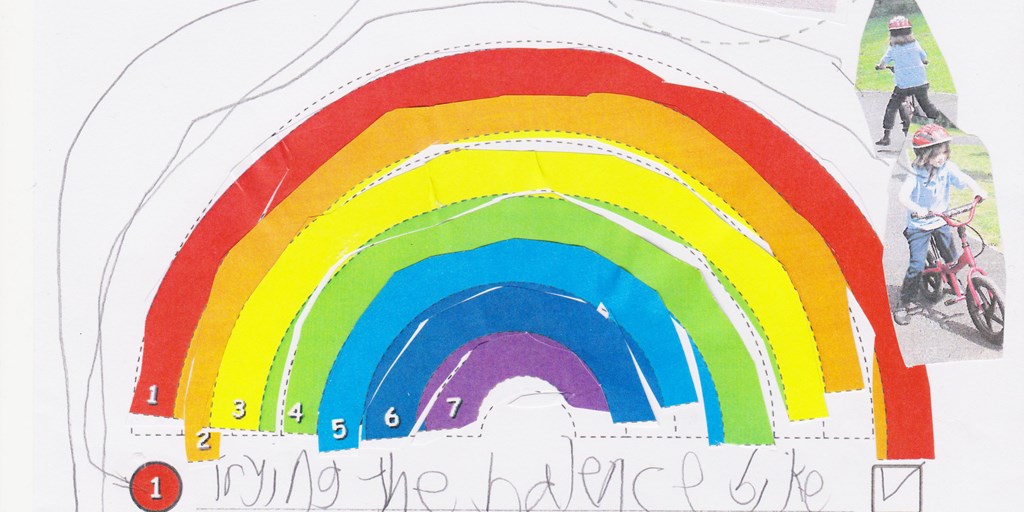Make your classroom more autism friendly by colour coding their way…

Adele Devine, special needs teacher and autism specialist shares her tips on colour coding your classroom to make it more autism friendly.
Make your classroom more autism friendly by colour coding their way…
Imagine life without colour. Everything is black, white or gray. What to wear is suddenly a whole lot simpler (and duller). No matter how bright the sun shines the sky will be a shade of gray.
Colour commute
Now consider your journey to work without colour. There will be no colour coded rode signs, total confusion at traffic lights. Imagine finding your way on the London underground trains without those helpful colour coded maps guiding the way.
Everyday colour
We use colour all the time in our everyday lives. Colour gives us choices, influences our moods and communicates faster than words or pictures. Colour can also help keep us safe.
Colour the classroom
Naturally we use colour to breakdown information in our classrooms. Maybe it’s traffic light systems for noise control, coloured pens for marking, differentiating teams or creating groups. We use colour because it’s quick, it’s easy and effective. But we can take this even further…
5 quick tips to colour the way
1 - Where to go? What to do?
When a child is unsure of expectations their anxiety will increase. Make expectations clear by providing individual schedules that they will understand. Teach the child to match their photograph to the one at the top of their schedule. They can remove a symbol and match it to a transition board. Expectations are clear and language is reduced.

Colour coded cooking equipment allows children to grasp concepts linked with weighing, measuring and starting out with simple fractions.

Colourful semantics was developed by speech therapists to enable pre verbal students to structure answers and build sentences. Sentences are broken down into ‘who’, ‘what are they doing’ ‘where’ and ‘to what’.

3 - Breaking down tasks
must break down tasks into achievable steps so that they achieve success with the right amount of stretch.

Be aware! A child with SEN or autism may become overwhelmed and believe a task is impossible if stages of learning are not clearly laid out.
4 - Traffic lights
Traffic light colours communicate fast and are already used in so many classrooms. Maybe the teacher uses them as a football referee to manage behaviour or noise. Traffic light systems can also be used to increase independence, communicating levels of help needed or enable children to communicate when they need assistance.

Be aware! Traffic light systems should NOT be used for whole class achievement or behaviour displays. Imagine being little Johnny who ends up on ‘red’ for all to see every day or Sarah who’s never got her photo onto green for good number work.
5 - Sorting symbols
We know that symbols communicate meaning quicker and are more universally understood than language. But when we start using symbols there are so many. There are symbols for timetables and transitions, symbols to promote good behaviour, symbols for personal care, symbols for sports and symbols for snacks.

A great way to sort these symbols is to create visual categories using colour. Shapes can distinguish categories and clarify meaning even further.

See through their eyes
With more and more autistic adults opening up and sharing their personal experiences we are becoming increasingly aware of the sensory issues and differing perception. We must use this information to improve education and ensure our students access the support the need when they need it.
Coloured lenses for scotopic sensitivity syndrome
Some people experience difficulty reading due to words jumping about on the page or experience other more alarming visual distortions. But everyday perception can also be dramatically different. A horizontal hallway may appear to be a vertical drop. A person may not see things as whole, but in parts or experience a type of pixel vision. Imagine how disconcerting and confusing this would be. The autistic child may not be aware that they see differently.
Coloured lenses
Glasses with coloured lenses, which filter light can transform the way they see. It is up to us to be aware to direct parents, as these things will not show up on a standard eye test.
Coloured acetate or paper
Coloured acetate placed over writing can help some children read. You can also cover the screen of the computer or tablet. Some students will improve with a certain shade of pastel paper. Some students will find white paper will black print creates an overwhelming glare whereas cream or pale blue paper is easy on the eye. The issues are real. Imagine going through school with a constant migrane. Imagine always needing to squint or look sideways to see. Accommodations can make the world of difference to academic performance and self esteem. It is important that we teachers know…
Jumbled senses and synaesthesia
Synaesthesia is a condition in which one sense is simultaneously perceived as if by one or more additional senses such as sight. The most common form of synaesthesia is grapheme-colour synaesthesia where letters or numbers are visualised as colours. Find more information about teaching students with synaesthesia here: http://www.syntoolkit.org/teacher
By Adele Devine
About Adele
Adele Devine is a Special Needs teacher at a school for young people with severe learning difficulties and autism in Surrey, UK. She has over a decade of experience teaching children on the autistic spectrum and worked as an ABA home tutor before qualifying as a teacher in 2004. Adele has a regular two-page feature in Teach Nursery magazine and shares her knowledge of special education needs through ‘A Special Blog’. In 2010, she co-founded the multi-award winning SEN Assist autism software with her husband. They have three children and live in Surrey, UK.
Are you looking for SEND staff or work?
If you're looking for a SEND teaching or support job in England or Wales, why not register with Axcis, the SEND recruitment specialists? Or perhaps you need to recruit staff for your school or provision? If so, why not take a look at the Axcis Website, or get in touch today to find out how we can help?


